For many luxury brands, the pursuit of sustainability is now seen as a strong value creator for their businesses. Yet as much as consumers signal their support for corporations conscious of their environmental footprint, some are still reluctant to accept visible flaws or “beauty marks” — commonly found in products with high recyclable content — especially if they are paying a premium price for them.
“It is tricky to balance, because we do not want to scare our customers so much that they become afraid when the product looks too different. On the other hand, we need to go beyond paths we normally take,” said Daniela Bohlinger, head of sustainability at BMW Group Design, about how the German auto giant is searching for a new design language in their electric vehicle and concept car models that is both sustainable, and that the luxury consumer will love.
“The secondary raw materials that we use require new ways of production. Now we get the chance to design differently and create a new appearance we hope people will get used to.”
The BMW Group is aiming to be carbon neutral by 2050 by creating a viable circular business. From using recycled plastics to rethinking seat upholstery, the automaker has pledged to increase the use of secondary materials in their cars, from the current rate of 30 per cent to 50 per cent. It is a move which could considerably improve its carbon footprint, especially within the supply chain.
There are, however, contradictions of sustainability that the luxury brand has had to deal with, said Bohlinger, which includes going through a thorough innovation process to ensure that the use of recycling materials does not degrade the overall look of its products. Speaking with Eco-Business from Munich, where the BMW Group is headquartered, Bohlinger, who designed the circularity and sustainability framework for the BMW i Vision Circular, a four-seater concept vehicle launched in 2021 to demonstrate the group’s creative vision of a compact, fully electric vehicle for the future, said that it is not always easy to marry resource efficiency or any aspect of circularity with the luxury look that loyal customers have gotten used to.
One example is the use of lightweight polymers — composites that reduce the overall weight of a vehicle. For now, the poor rate of their recovery and limited recycling infrastructure create problems for automakers who would want to use more secondary plastics in their vehicles. Getting the right look with recycled polymers is also challenging, said Bohlinger.
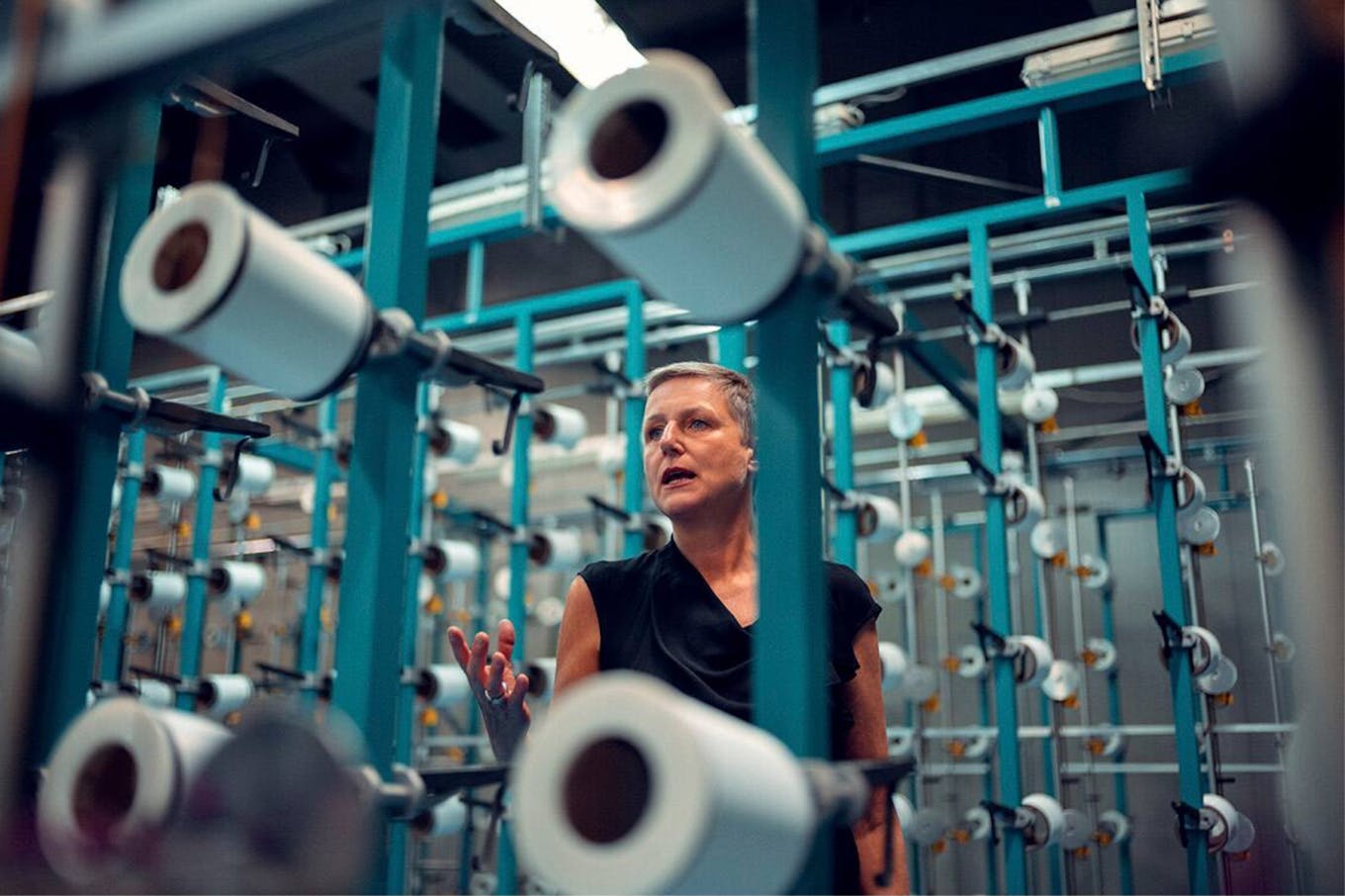
Bohlinger visits a recycling plant. Yarns made from fishing nets are used to make the headliners and floor mats in some of the BMW models. Image: BMW Group
“It would actually be pitch dark if you used recycled plastic,” said Bohlinger, of how the use of polymers could compromise a certain “marbly look” of a car’s exterior that the BMW consumer is after. “It is not sexy enough for us.”
Bohlinger also speaks about a certain kind of pride that the BMW designer has, in knowing the target customer base well, while trying to push the boundaries on innovative circular design. Every designer on her team sees a new problem statement as an exciting challenge, she said.
The BMW Group now has its eye on cracking the Chinese market, and Bohlinger, who’s worked in the Philippines earlier in her career, said she is certain the consumers in Asia will accept the circular design in cars, if it is done right. “My personal conviction is that there will be circularity in every car then,” she said.
Last year, about 846,000 BMW Group vehicles were delivered to customers in China, an increase of 8.9 per cent against 2020.
In this interview, Bohlinger shares more about the joy of rediscovering simplicity in single materials and how her team tackles the different design problems that they face.
Delivering real results in sustainability is at the heart of your work with the BMW Group, but how do you balance that with what appeals to the luxury consumer?
There are these overlaid targets that we have — both in emissions reduction and in increasing the proportion of secondary materials that we use. As much as possible, we are striving to move towards a circular economy, where we aim to use more mono-materials in our cars rather than take a multi-material approach, and to ensure easy dismantling. There is a certain hierarchy of action in our technical approaches. First, we have to check if the material we use comes from a secondary source, and if it is a secondary material that has been used or recycled, is it possible for us to remanufacture it in the shape and look we expect it to take?
“
The first thing to do is to reduce as much as you can. I think that was something the designers were all not used to. You really have to question every line that you draw or every new thing that you add. Is it really needed?
Appearance is the next thing that we look at. We have very high expectations about the look, touch and feel of the material surfaces of our cars. For example, if we aim to use about 50 per cent of secondary or recycled materials in a car but this would compromise its look – say a certain look that we expect disappears or the appearance of the car does not meet expected standards – then ultimately we try to “balance it out”. We would have to lower the secondary material input to maintain the luxury appearance. It is a constant challenge that we face: to try to build a circular car but take care of the aesthetic requirements.
Why pursue circularity?
I think it is a process which will align all carmakers in the automotive industries in the future. We all have to go that way, so that we can have access to resources even as the vehicle reaches the end of its life. It is an economical way of thinking, and if you want to do that, at the design stage of the product, you will already need to ensure that the pieces can be disassembled quickly.
Why can’t the luxury consumer accept visible sustainability? Other than appealing to the market, does the BMW Group try to shift consumer mindsets too?
It is an interesting question that we are researching and asking ourselves: should sustainability change the overall design appearance of a product? Will we need a new form language because of new requirements that arise while we pursue circularity and the ease of disassembly?
Take the example of the BMW i Vision Circular, there is a whole new design language in the car which we believe still appears luxurious and freshly new, despite its adoption of circular economy principles. This was achieved because we had a purpose-driven design based on the idea of easy dismantling. Once that became the lead design factor, everything else became secondary to it. It does not mean that we compromise on achieving this “highly luxurious look” that is in the BMW DNA though. Ultimately I think that is something we cannot lose, so what we do is we consider if a design detail that we want adds value to the look of the car. The BMW i Vision Circular, for example, is outfitted with quick-release buttons that, when pushed, allows dismantling as car parts held together by detachable connections fall apart. The buttons are also jewel pieces that enhance the design.
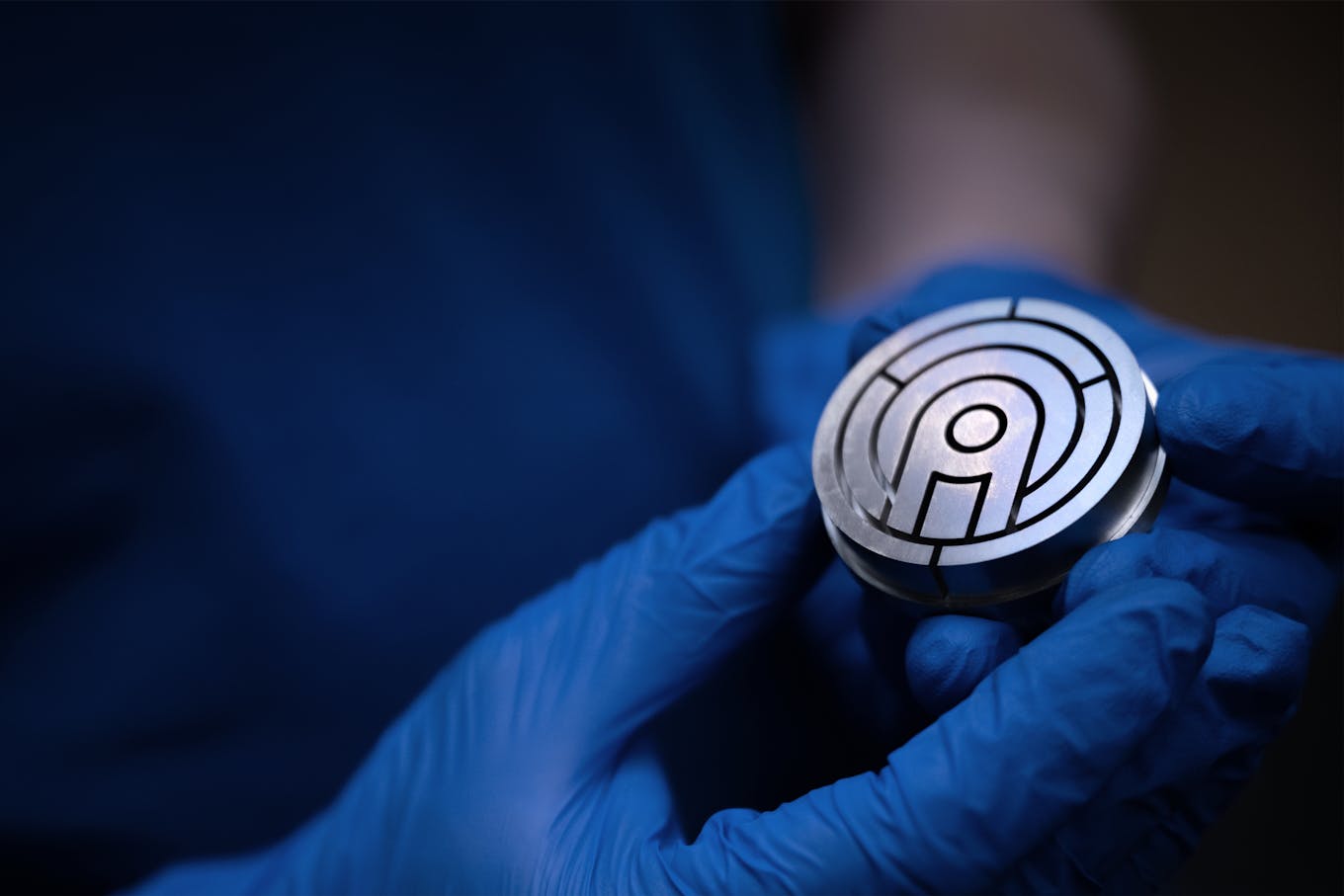
A metallic design detail in the BMW i Vision Circular. Bohlinger says that the team considers if a particular detail adds aesthetic value to the car before deciding whether to incorporate it. Image: BMW Group
Has this been a challenging conversation with your team of designers and engineers – on whether to make the sustainability aspects of the car visible?
It is based on extensive research. We have design work studios in Shanghai, China, and in the United States and Europe. We did a sustainability study to understand the needs of different markets around the globe. Of course we have a good sense of what our customers are attached to and what they love, so we are allowed to set a bold statement based on our experience.
It is also interesting when we start the design process with a sustainability briefing, rather than look at the technical engineering aspects first. When we worked on the concept car, the sustainability briefing came first and the designers embraced that. They love a challenge.
What were some of the problems they had to solve?
The first thing to do is to reduce as much as you can. I think that was something the designers were not used to. You really have to question every line that you draw or every new thing that you add. Is it really needed?
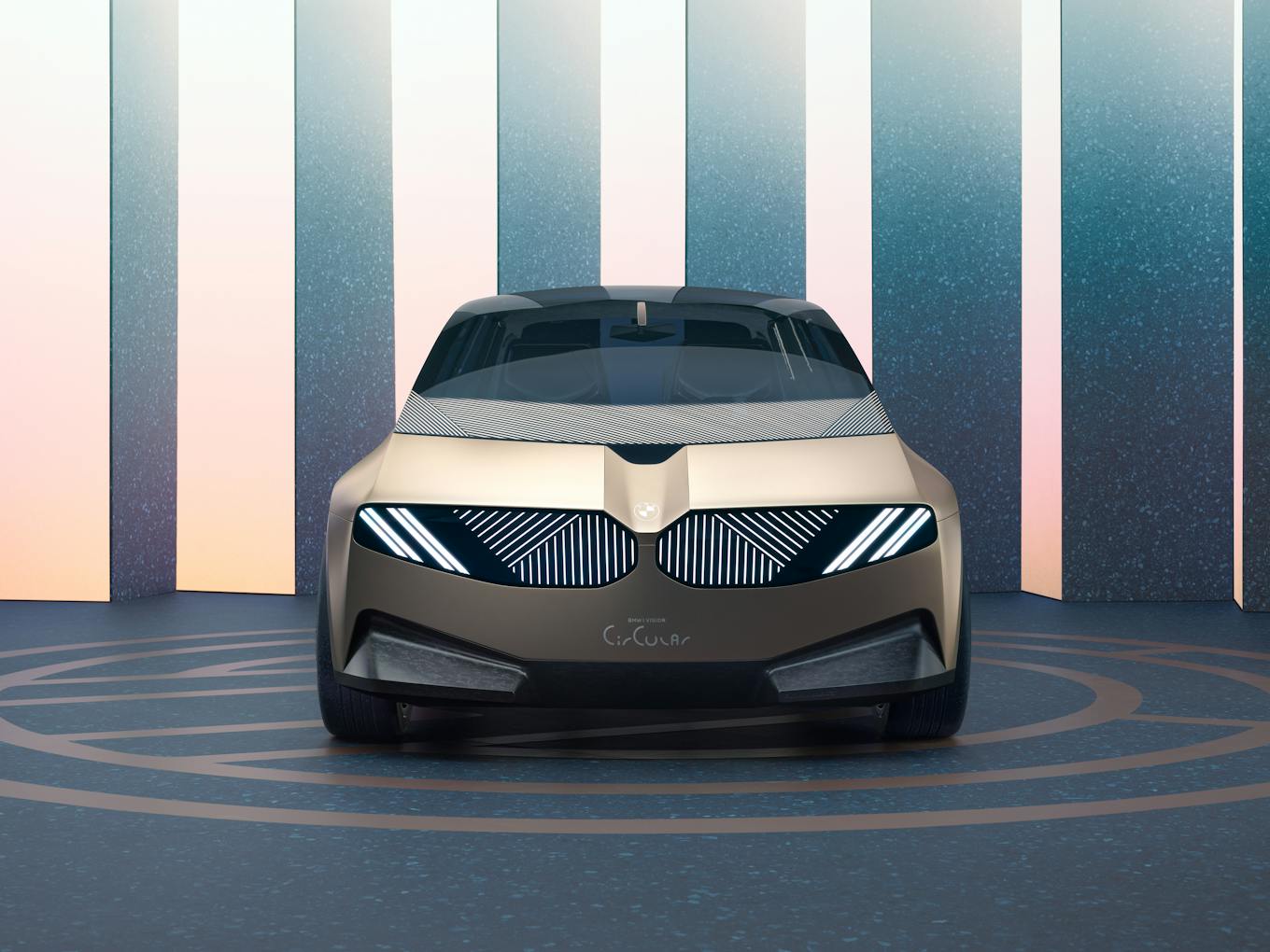
The BMW i Vision Circular, a four-seater concept car focused on sustainability and luxury. Image: BMW Group
The ease of dismantling was next. You need to think more about using mono-pieces rather than composites, so that materials are not glued and stuck together forever.
A car is usually made up of about 10,000 different materials, and if it is just the design aspect of it, there are about 1,000 materials. When we were designing the i Vision Circular, I told the team to not use more than 15 materials at first. They came back to me and said, “Oh, we do not need more than 10.” In the end, we reduced it to just five and they were all mono-materials. We used green steel and aluminium, as well as recycled plastic. We also used bio-based raw materials which lower the carbon footprint of the car. There are other materials that we have to add, such as glass, but we try to engineer them to ensure a higher recycling rate.
If there was one material that could potentially become a game-changer for circular design in automobiles, what do you think that might be?
I believe that every material is a challenge for us, because each one has different and new properties. However, what has been really challenging is working with the new polymers. The secondary markets for polymers are not yet controlled, so we do not have a steady supply of polymers, especially if we want them to be of a certain quality, so that we can control the look and aesthetic of the car. With the BMW i Vision Circular, you can see that the door has a certain kind of “marbly look” – it is the type of “wow” expression that we are pursuing, of how we envision recycled materials should look like in the end. But it would actually be pitch dark if you used recycled plastic, and that would not be sexy enough for us.
Now is the time to redesign it and find a fine line between achieving a look that is neither too loud nor too quiet. At the end of the day, it is about how far we can go with the new design language. It is tricky to balance, because we do not want to scare our customers so much that they become afraid when it looks too different. On the other hand, we need to go beyond paths we normally take, and that is probably where we come in to change the mindsets of the consumers. The secondary raw materials that we use require new ways of production and it is something people need to get used to. Maybe they would have to accept that the exterior won’t be that glossy anymore? Because gloss is difficult when it comes to recycled material. The shine will be reduced and the car’s interior will look cleaner.
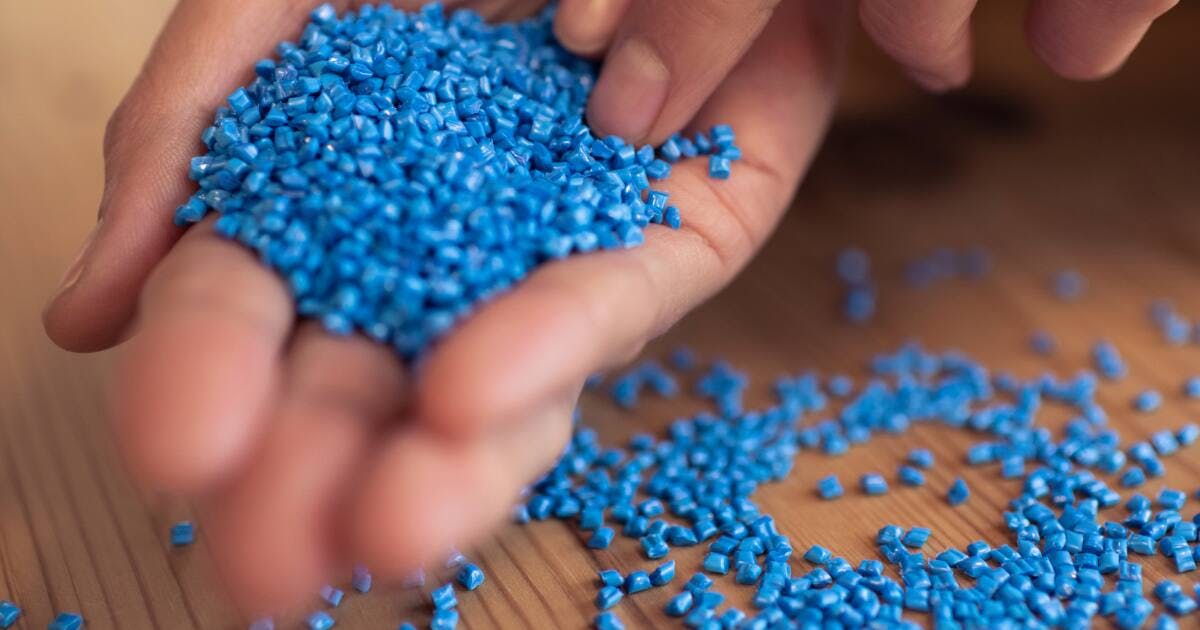
Recycled material accounts for over 20 per cent of the thermoplastic content in the BMW iX, the technology flagship of the BMW Group. The company aims to achieve a figure of 40 per cent, on average, for all models, by the end of this century. Image: BMW Group
The low hanging fruits of circularity are probably secondary raw materials such as aluminium and steel. We still spend a lot of effort to procure them though, and we need to make sure we have access to all these materials in the future. We work with new start-ups and innovators to find solutions too. These include ideas that are not feasible at the moment, for example carbon capture. We will have to look at how that impacts the whole manufacturing process and work that into our life cycle assessments. Afterall, we are an economically-interested company. We have to keep our operations going and cannot sacrifice all for the sake of sustainability. There are employees who are relying on us to provide them with jobs, so the transformation has to be smooth and we are very cautious about that.
The BMW Group is trying to expand its presence in China. Do you think consumers in China are accepting of circular design in their electric cars? There are also different brands competing in the market, what do you think would appeal to the Chinese market?
We are doing our research, making some assumptions, as well as talking to leaders in the sustainability field about the Chinese market. Car manufacturing is possibly the most complex industry in the world and we tend to think seven years ahead about our future products. For example, I am working on a 2028 project at the moment so I have to try to imagine what the consumer, especially the Chinese consumer, would expect in 2028.
My personal conviction is that there will be circularity in every car then. For the Chinese, the biggest barrier is regulatory uncertainty because we have to anticipate and catch up with the changing laws and regulations. Even so, our approach is to set tough goals so that circularity and sustainable design principles are embedded in the cars that we sell Chinese consumers.
For now, we think what appeals to the Chinese market is digitalisation. The Chinese consumer wants something that is super convenient. They want seamless transition between the tools that they use and for the car to deliver an experience that is hyperreal. So we will have to innovate so that we can ensure that the hardware that is used at the end of the day is also designed to be sustainable and fully-recyclable. I believe that the Chinese consumer will embrace that, but at the same time, it has to be luxurious.
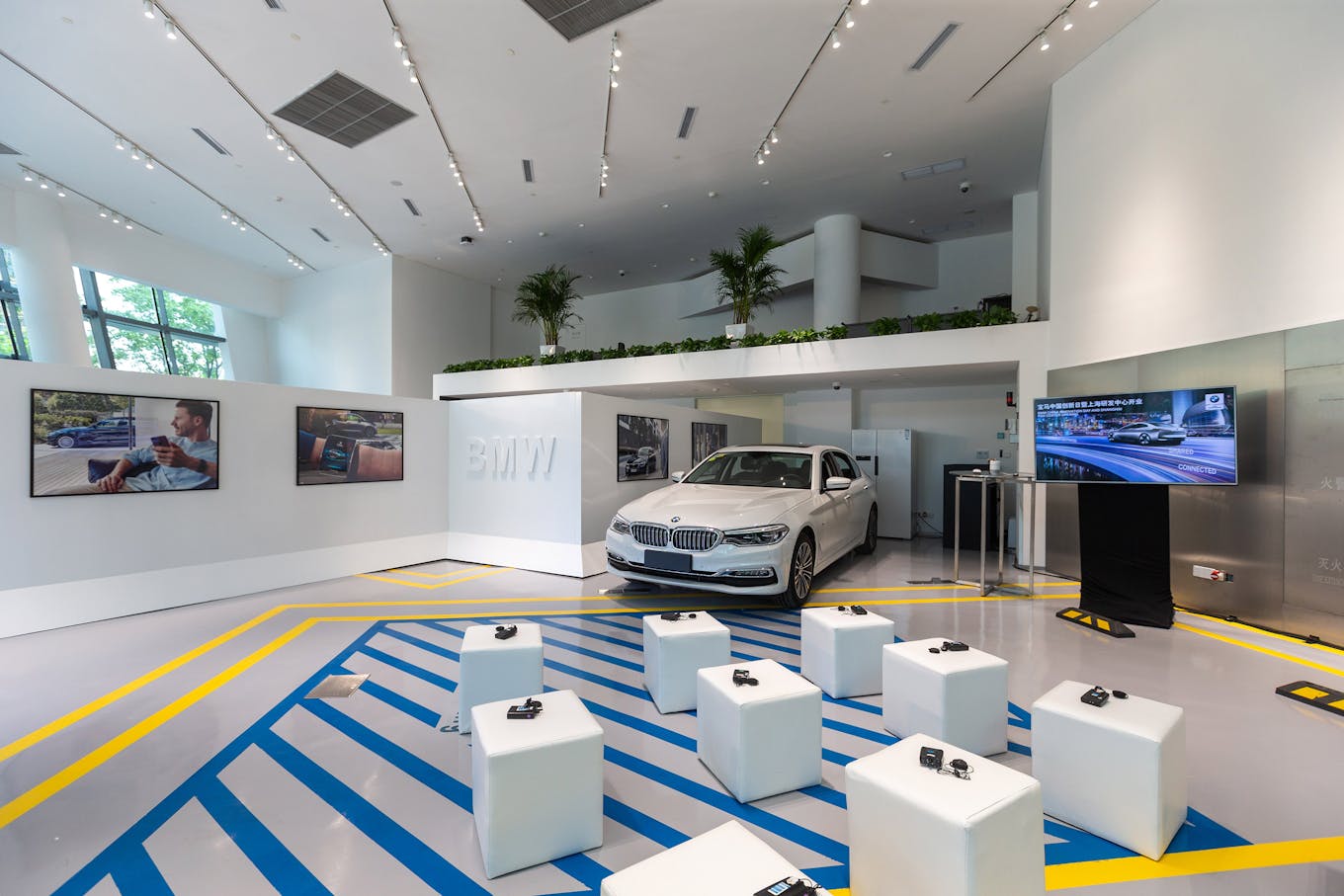
The digital products and services experience area at BMW Group Shanghai R&D Center. Image: BMW Group
The difficulties of working with polymers probably apply to other industries as well. As a designer, can you share your insights on how far circular design has progressed?
Everyone in the design community is talking about circularity. Not only do you hear it at the COP26 climate summit but also from the German Design Council to the Industrial Designers Society of America they are all talking about the transformation from a linear way of thinking about product design to a circular one. I can see a strong movement in Europe especially, because we are very much driven by the changes in laws and regulations and so we want to find quick design solutions. I think circular design is something that is embedded in the Bauhaus school of thought – which is focused on material-driven and purpose-driven design – and the new German Bauhaus is addressing the topic head on.
Sustainability has arrived and you cannot deny this topic any more. It is more a matter of how convinced companies are about its importance, and how fast they can implement it in their products.
There are people who say that BMW’s push on circular design takes the focus off the reduction of tailpipe emissions. What would you say to such criticism? What is the BMW Group doing in ensuring that there is reduction of carbon emissions?
BMW is tackling all three scopes of emissions upstream, and that includes emissions from our direct operations as well as value chain emissions. Now that we are pursuing circular production, we are looking at how we source our materials, and we then factor the reduced emissions in our calculations. To target having 50 per cent of secondary raw materials in a car lowers our carbon footprint immediately. It is also a huge challenge because of all the technical requirements of the different materials. We are also thinking about what we can do to reduce the environmental impact of a vehicle at the end of its life.
To lower emissions, another crucial factor is the development of batteries that are used in our electric cars. The materials used to make batteries are difficult to source and it is what we are working on now. The consumers have to play a part too, so we recommend that they use regenerated energy. In doing so, they bolster all our efforts in trying to lower our carbon footprint as much as possible.











